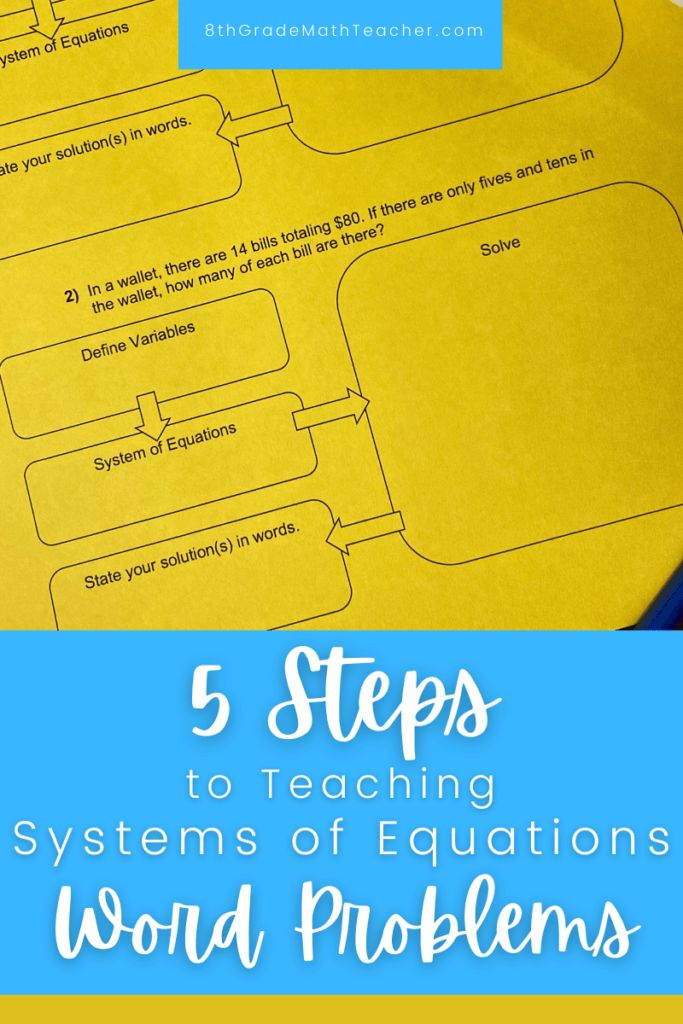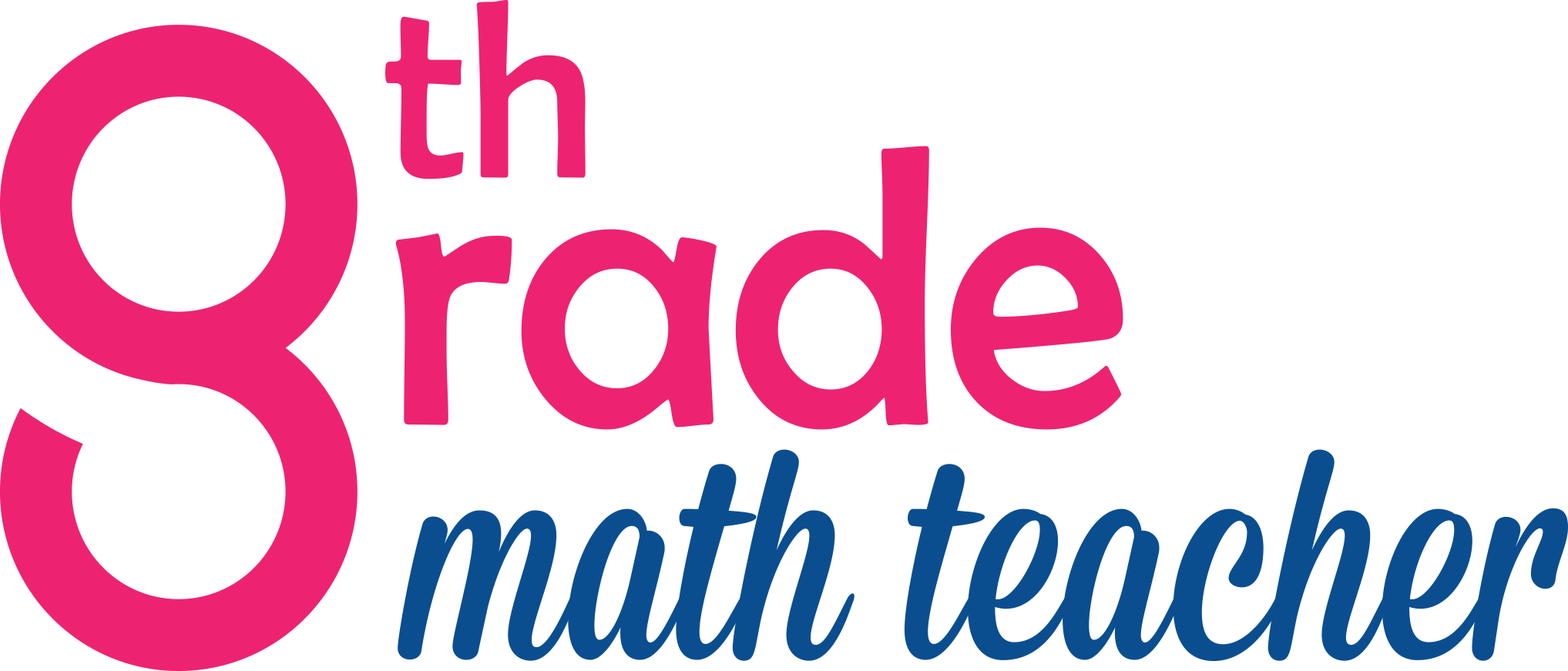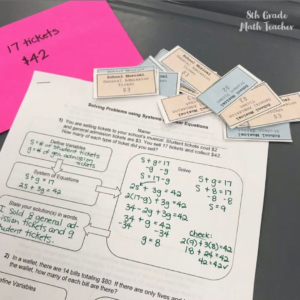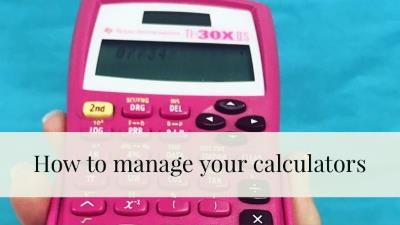When teaching how to solve systems of equations word problems, it can be helpful to model these steps.

Step 1: Define your variables.
The very first thing you need to do when solving systems of equations is determine your variables. What are the unknowns? What is the question asking you to find? Here’s a hint: they wouldn’t ask you to find it if it wasn’t unknown! Start there.
Suppose a question asks how many days did it rain and how many much rain was collected. Make your variables represent d = # of days it rained and r = # of inches of rain collected.
Here’s another hint: see if the problem has a rate of change (inches per day, dollars per hour, etc.) Often, the 2 things given in the rate of change are the 2 variables.
Step 2: Write a system of equations.
Now, I’m hoping if you are writing systems, you’ve had plenty of practice writing linear equations, so I won’t spend much time here. I will say that you should emphasize that there need to be 2 things mentioned in the problem that are not the variables. That’s important. If you just defined your variables as x = general admission tickets and y = balcony tickets, then both equations need both of those things. That is, they both need an x and y.
So what are the numbers telling you? Are some of the numbers describing the amount of money while another number describes the amount of tickets? Write 2 equations based on those 2 distinctions. Let me give you another example.
In your change purse are 30 coins (only nickels and dimes). You have $2.30. How many of the coins in your change purse are dimes? How may are nickels?
So, the 2 variables would be d = # of dimes and n = # of nickels. It may be tricky for students to write the 2 equations here, so ask them to look at what the numbers describe. There are 2 numbers give (30, which describe the number of coins and 2.30, which describe the amount of money). Tell students that (using the variables d and n) they should write one equation that has to do with the number of coins and one that has to do with the money).
If they are still having trouble, ask them to tell you what they know that wasn’t actually stated in the problem (dimes are worth $.10 and nickels $.05, you add the number of nickels and dimes to get 30 total coins). I sometimes have to ask students if the 30 represents nickels or dimes. They can usually tell me that it’s both together, which leads them to understand they need to add d + n to get 30.
From there, the rest of the steps get easier.
Step 3: Solve the system of equations.
Most of the word problems I usually see use the substitution method to solve, but you can also have students choose graphing or elimination if it makes more sense for the type of system.
Step 4: Write the solutions in words.
Once you know what x and y equal, state them in a sentence. You can refer back to step 1 if you’ve forgotten what they represent. When you state the solution in words, such as, “there are 14 nickels and 16 dimes,” you are able to quickly find mistakes. For example, if you end up with more coins than you were supposed to or somehow got a negative number of nickels, it’s easy to see that there’s been a mistake made. This brings us to our last step…
Step 5: Check that your answer is reasonable.
I always tell my students that if it doesn’t make sense, then it can’t be right. So, once you’ve written out your solutions in words, check to make sure that it could really be true. I don’t mean plug in x and y back into the equations. What I mean is simply see if it all works out as it should. Does your answer give you the correct number of coins you were supposed to have? Is the number of coins you got equal to the total amount of money stated in the problem? If so, you can be sure that your answer is reasonable and therefore correct. If not, see if there is a simple calculation error when solving or if the system of equations needs to be written differently.
I hope these steps help your students begin writing systems of equations from word problems and that they gain confidence with each problem. If you would like a set of questions that have these steps in a graphic organizer, check out this resource Systems of Equations Word Problems Activity with Graphic Organizer. It also comes with images from the problems that can be printed for student self-checking.





